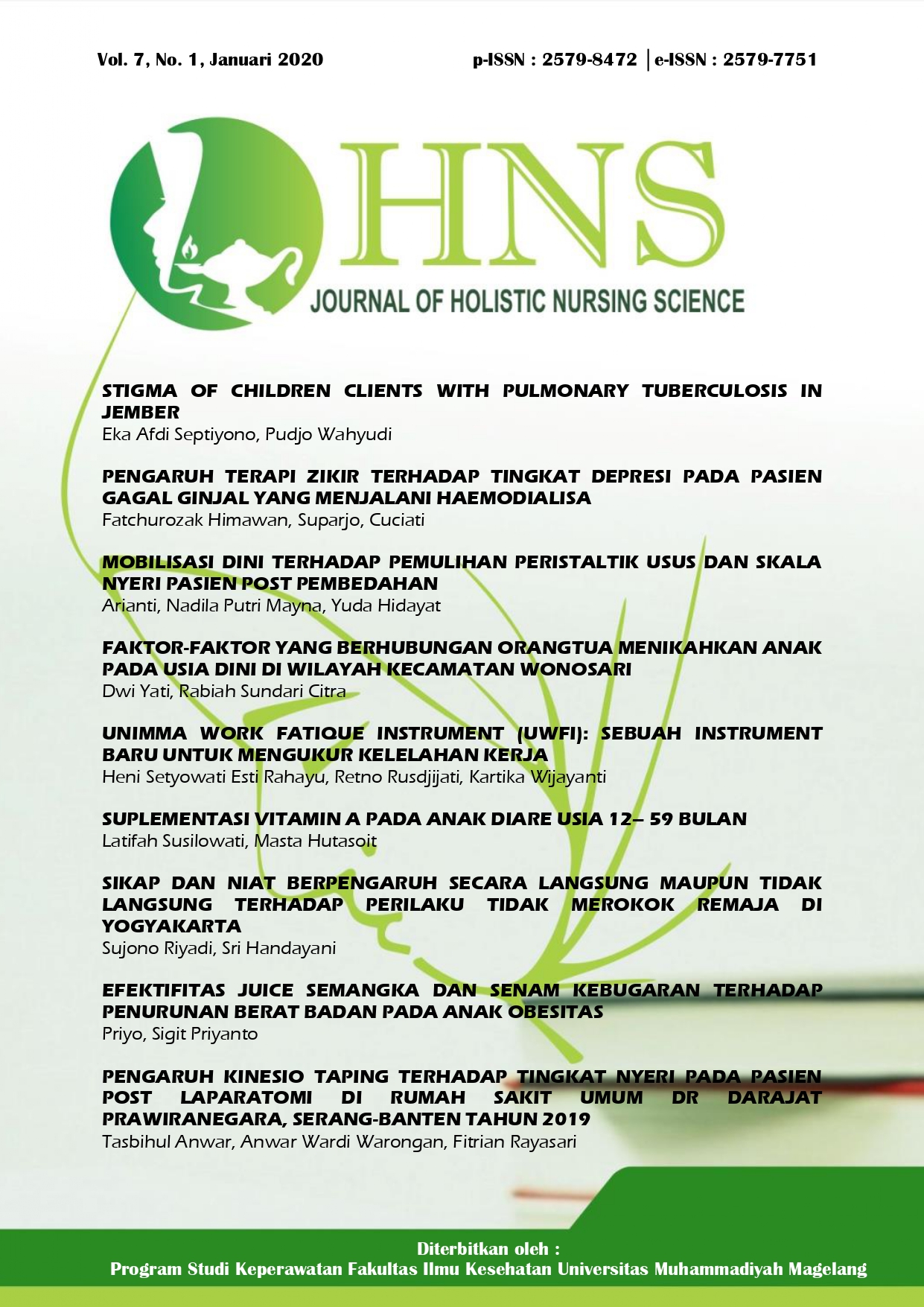UNIMMA WORK FATIQUE INSTRUMENT (UWFI): SEBUAH INSTRUMENT BARU UNTUK MENGUKUR KELELAHAN KERJA
Main Article Content
Abstract
Work fatigue is a phenomenon that is experienced by many workers that may possibly reduce work productivity among workers. In most cases, this type of fatigue is not just being physically tired, but also it is mentally exhausted. Several instruments which are able to measure this problem has been well developed, however, to the best authors’ knowledge ongoing work fatigue can reduce worker productivity. There are already many instruments to measure fatigue, but each instrument may not be used to measure work fatigue, especially workers in the informal sector, so it is necessary to develop a valid and reliable instrument to measure work fatigue. This research was developed by analyzing every statement in (UWFI). The number of samples was 38 female workers in the informal sector. The statistical test used for validity analysis is product-moment correlation and reliability using single reliability. The results showed that of the 23 items there were 4 items that were invalid but because they were represented by other items, the items were not used, so the UWFI instrument numbered 19 items. While the reliability of the instrument is 0.877, the UWFI instrument is declared valid and reliable.
Downloads
Article Details

This work is licensed under a Creative Commons Attribution 4.0 International License.
Authors who publish their articles in JHNS retain full copyright of their work. JHNS does not require authors to transfer their copyright to the journal or Universitas Muhammadiyah Magelang as the publisher. The authors grant JHNS a license for the first publication.
